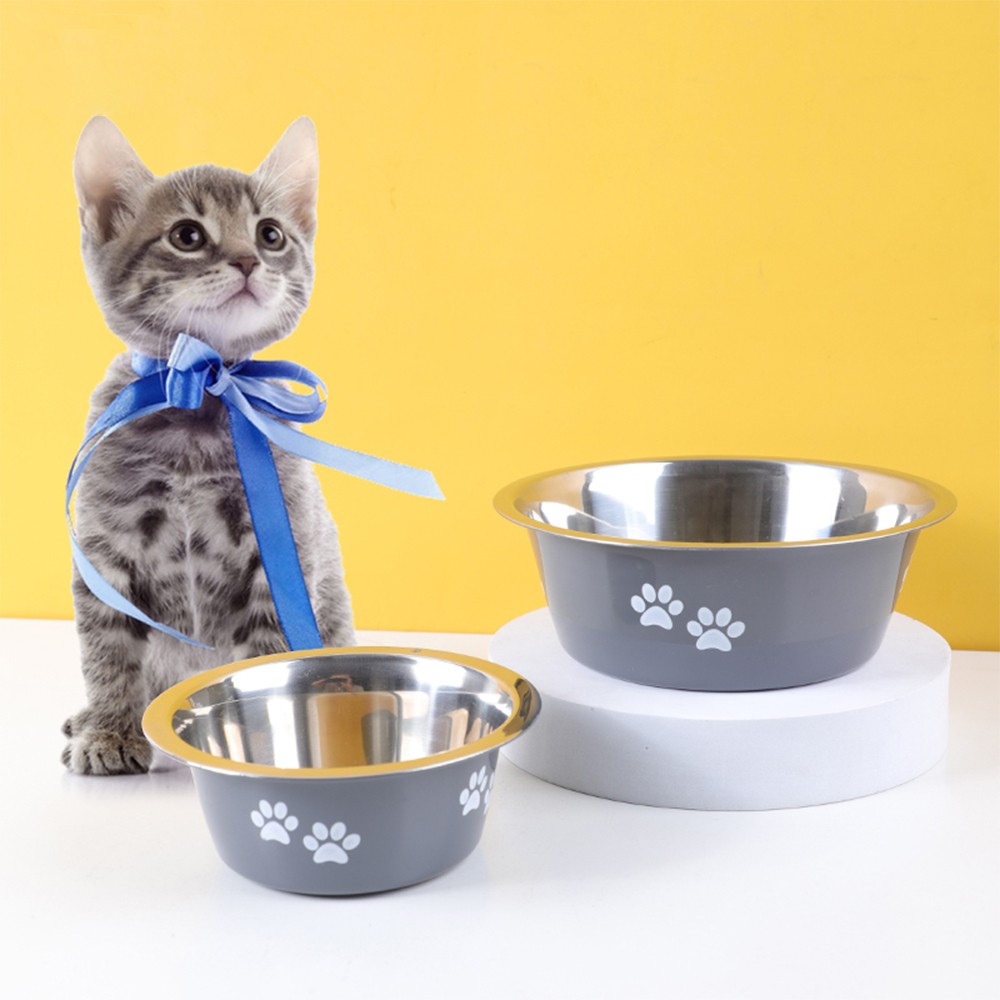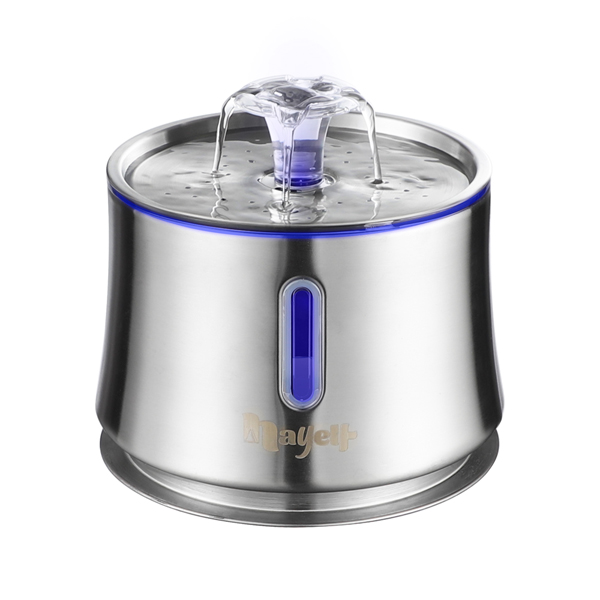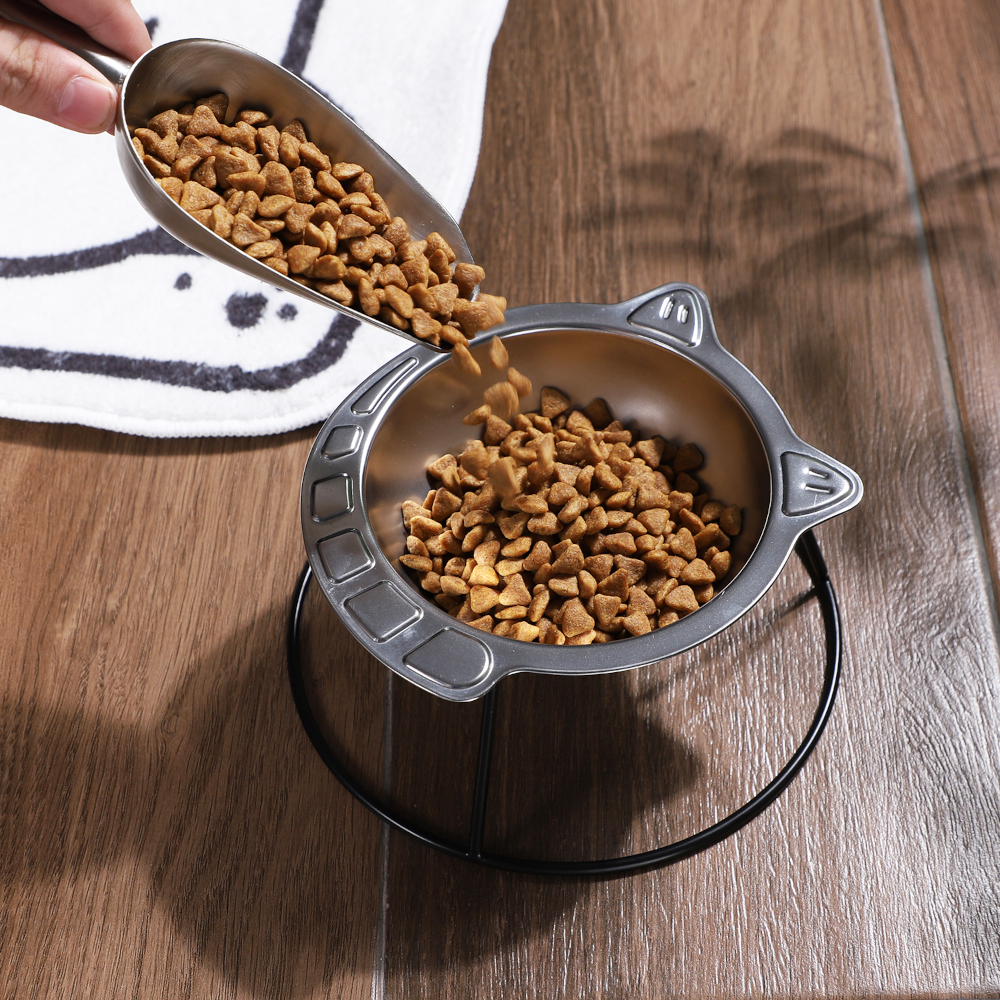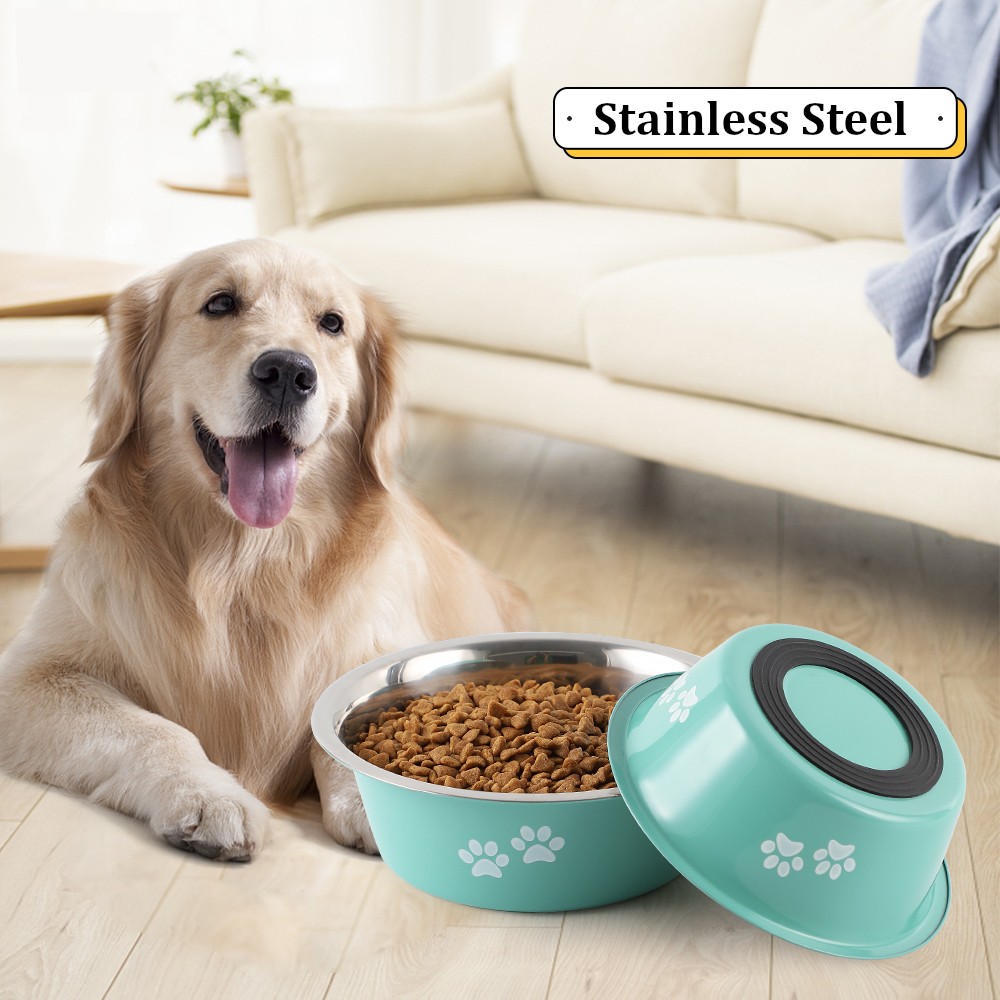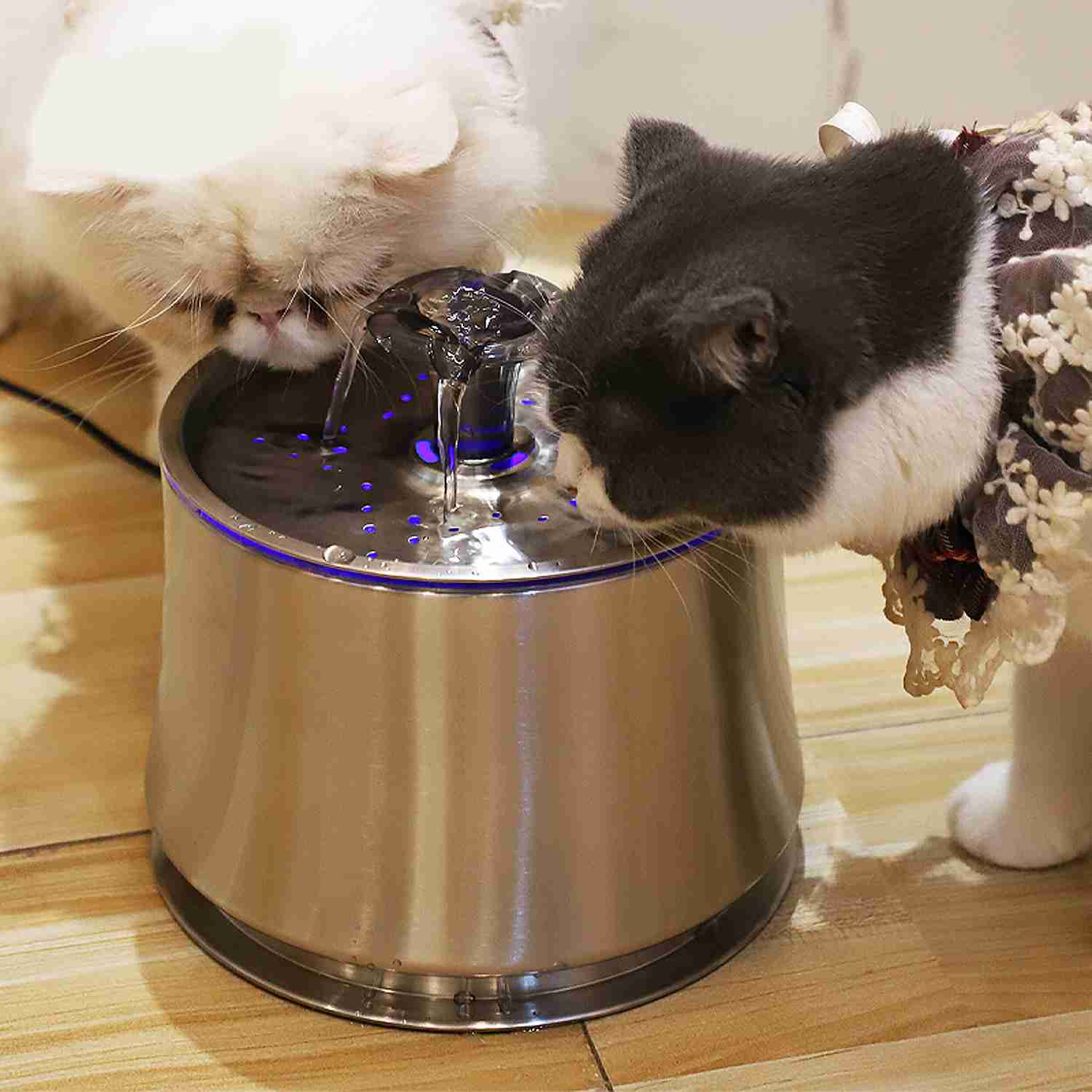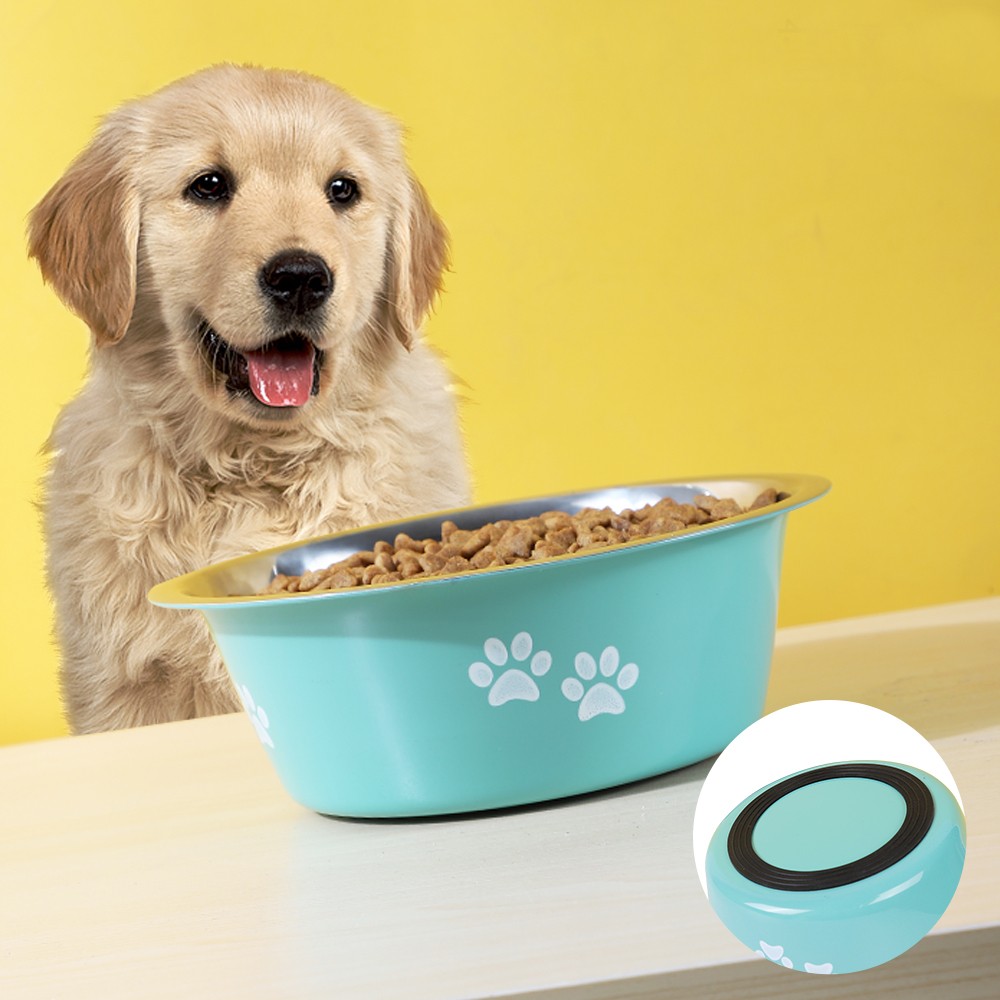
An Overview of Popular Dog Bowl Materials
When it comes to picking the right dog bowl for your four-legged friend, two of the most popular materials pet owners choose from are ceramic and stainless steel. Both offer durability, ease of cleaning, and safety, but they have some key differences when it comes to specifics like antibacterial properties, scratch resistance, and cost.
Ceramic and stainless steel each have their own sets of pros and cons to weigh when deciding which is the better option for your dog. Ceramic bowls can provide an attractive, natural look and feel, but may chip or crack over time. Stainless steel is lightweight and impervious to rust, but some dogs dislike the metallic smell and noisy sound the bowls can produce.
Looking closely at the benefits and drawbacks of ceramic vs. stainless steel dog bowls can help you make the optimal choice to suit your pet’s needs and your own preferences as a dog owner. Factors like your dog’s breed size, any food allergies, habits like vigorous eating or pushing bowls around, and placement of the bowl indoors or outdoors will also influence your decision.
With a wide selection of styles, colors, shapes, and sizes of ceramic and stainless steel dog bowls available today, there are lots of options to provide your dog with safe, comfortable, and attractive dining. Read on for more details on the key differences between these two most popular dog bowl materials.
What Exactly is Stainless Steel?
Stainless steel is a common metal alloy composed mainly of iron and containing at least 10.5% chromium along with elements like nickel, carbon, silicon, titanium, aluminum, copper, nitrogen, and molybdenum. The amount of chromium is key, as it reacts with oxygen to form a thin passive layer of chromium oxide on the surface that acts as a shield against corrosion and rust.
There are many different stainless steel grades and finishes – common ones used for dog bowls include type 304 and type 18/8. Type 304 is the most popular and versatile due to its excellent forming and welding properties, durability, and resistance to rust and other corrosion. 18/8 refers to the fact that the steel contains 18% chromium and 8% nickel.
When shopping for stainless steel dog bowls, those made from thicker gauges and food-grade 304 stainless steel are the best choices for durability and safety. Bowls will often be marketed as “rust-resistant” or “no rust” when they are fabricated from high-quality stainless steel alloys.
Stainless steel provides a nonporous, smooth surface that makes cleaning easy by hand or in the dishwasher. It can withstand repeated dishwashing without losing its shine or having the surface degrade over time. Thanks to its rust-resistant properties, stainless steel is a great choice for both indoor and outdoor dog bowls.
Benefits of Using Stainless Steel Dog Bowls
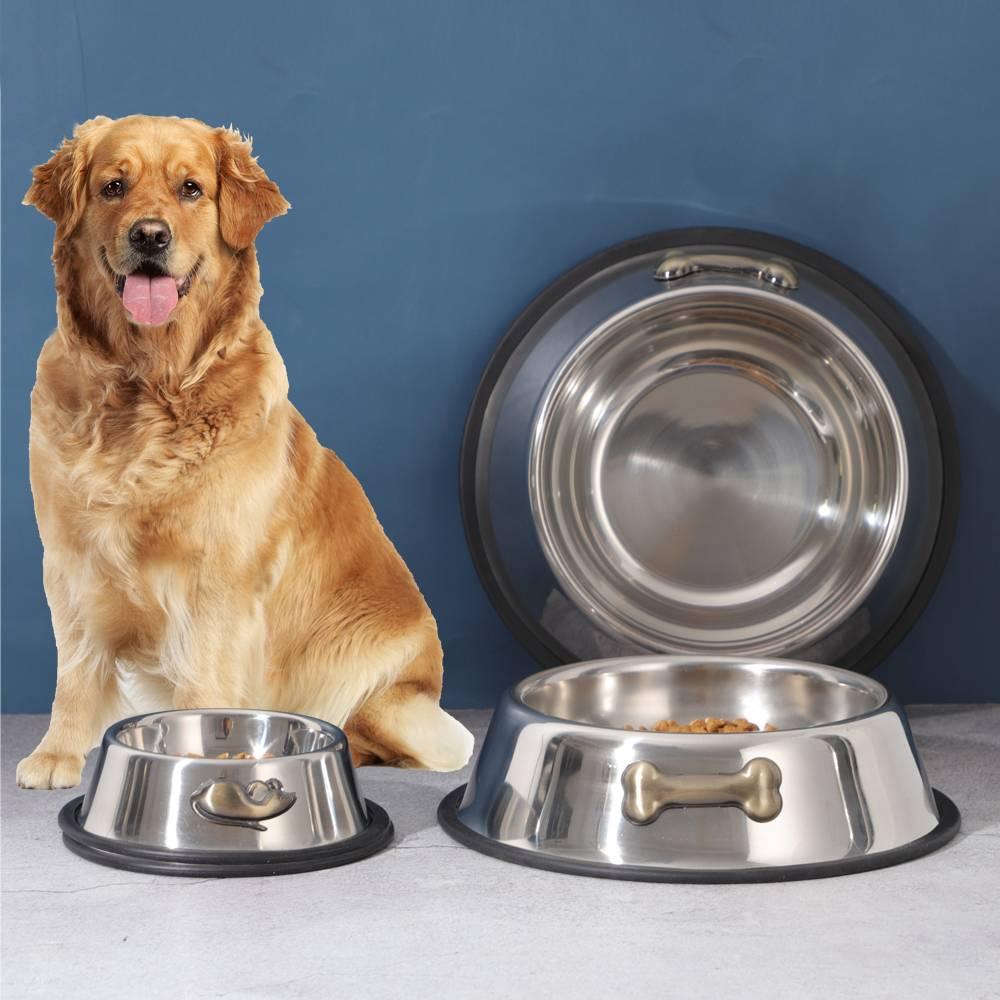
Stainless steel is one of the most popular choices for dog bowls due to many beneficial features:
- Extremely durable – stands up well to dents, biting, and rough handling
- Rust-resistant for lifelong usage indoors and outdoors
- Dishwasher safe and easy to sanitize to prevent bacteria
- Non-porous surface does not trap food or allow bacterial growth
- Lightweight construction is built for portability
- Does not chip or crack with normal use
- Available in a variety of sizes to suit any dog
- Often less expensive than ceramic bowls
The easy care and hardy nature of stainless steel make it an ideal material for dog bowls in busy, active households. Stainless steel bowls can serve any breed well, from tiny Chihuahuas to giant Mastiffs and anything in between. They provide a chew-resistant, non-absorbent, odorless, and stain-free feeding solution suitable for wet and dry food.
Potential Drawbacks of Stainless Steel Bowls
While stainless steel has many positives as a material for dog bowls, there are a few potential disadvantages to consider as well:
- Can be noisy when placed on hard surfaces, which may disturb some dogs
- Does not offer as much variety in style and decorative designs as ceramic
- Some dogs may dislike the metallic smell and taste of stainless steel
- Bowls must be thoroughly scrubbed to remove grease, fat, or oil residues
- Not as visually appealing for in-home feeding as ceramic bowls
- Prone to showing scratches, scuffs, and dents over time with rough use
- Heavier than some other materials if portability is a concern
- May contain nickel or other metals that very rarely cause allergy issues
- Not recommended for dogs with metal allergies or sensitivities
The noise factor of stainless steel hitting a food dish holder or kennel floor is one of the most common complaints from owners. Some dogs are also picky about the smell or taste imparted by stainless steel.
But for the vast majority of canines, high-quality stainless steel dog bowls present no health or safety issues. Any potential drawbacks are generally outweighed by the strength, longevity, and easy maintenance of stainless steel dog dishes.
What is Ceramic Made Of?
Ceramic dog bowls can be made from a variety of different clay-based materials that are shaped while wet and then hardened through high-temperature firing in a kiln. The primary clay types used are earthenware, stoneware, and porcelain.
Earthenware is the most basic type of ceramic, made from natural, reddish-brown clay and fired at lower temperatures up to around 2,200°F. It’s more porous than other ceramics. Stoneware is harder and less porous thanks to higher firing temperatures reaching 2,200-2,400°F. Porcelain, made of white clay containing kaolin, is fired at the highest temperatures of over 2,450°F to become non-porous and incredibly hard.
Glazes are often applied to the outer surface of ceramic dog bowls, fusing to the clay body during firing to create a glass-like coating. This waterproofs the bowl and allows for an endless array of colors, patterns, and decorative designs. Unglazed ceramics showcase the natural terracotta color of the clay.
The specific clay composition, production method, firing temperature and time, and glazing techniques all contribute to the properties of the finished ceramic dog bowl, including durability, strength, and how smooth the surfaces will be.
The Pros of Ceramic Dog Bowls
Many dog owners prefer ceramic dog bowls thanks to benefits such as:
- The attractive, natural aesthetic for home décor
- Huge variety of shapes, colors, and decoration designs
- Smooth, non-abrasive surfaces are gentle on the dog’s face/nose when eating
- Can be personalized with the dog’s name or design
- Generally quiet and non-slip when placed on the floor
- Easy to thoroughly clean and sanitize
- Durable if high-fired stoneware or porcelain
- Handcrafted appeal from artisan bowl makers
- A cooler surface keeps water from warming up
Glazed ceramic bowls are also stain-resistant, non-absorbent, and non-porous. Customized ceramic dog bowls can add a touch of artistry and whimsy to a pet’s dining experience. Stoneware and porcelain ceramic dog dishes provide a solid combination of beauty, safety, and functionality.
The Cons of Ceramic Feeding Bowls
On the downside, some drawbacks of ceramic dog bowls to be aware of include:
- More fragile – can chip, crack or shatter if dropped
- Prone to staining from colored foods over time
- Porous unglazed clay can trap bacteria if not cleaned frequently
- Earthenware lacks durability for outdoor use
- Heavier than stainless steel or plastic bowls
- Noisy if dragged on hard flooring
- Cost is generally higher than stainless steel
- Not ideal for dogs that are aggressive chewers
- Limited styles and sizes compared to other materials
The risks of chipping and bacterial issues mean close supervision is required when dogs use ceramic bowls. Porous earthenware ceramics provide fewer benefits than high-fired stoneware or porcelain. But with proper care and maintenance, ceramic dog bowls can be a safe and charming feeding solution.
Ceramic vs. Stainless Steel – A Direct Comparison
When weighing ceramic vs. stainless steel dog bowls, a few key differences emerge:
| Comparison Points | Ceramic | Stainless Steel |
| Cost | More expensive | Typically more affordable |
| Durability | Can chip or crack | Very durable |
| Cleaning | Requires more effort | Easy to clean and sanitize |
| Bacteria Resistance | Can absorb bacteria if unglazed or porous | Resists bacterial growth |
| Styles and Designs | Lots of variety in colors and patterns | Limited in styles |
| Noise | Quiet | Can be noisy |
| Outdoor Use | Not recommended | Great for outdoor use |
Stainless steel dog bowls clearly excel when it comes to durability, ease of care, and cleanliness – important factors for pets’ health. But ceramic bowls offer visual appeal and customization that stainless steel cannot match.
Many owners opt to use stainless steel for water and ceramic for food to get the best of both materials. It’s also popular to utilize stainless steel outside and ceramic bowls inside the home for easier blending with interior décor. By understanding the strengths of each material, pet owners can make an informed decision on which better suits their needs.
What Other Materials for Dog Bowls Are Available?
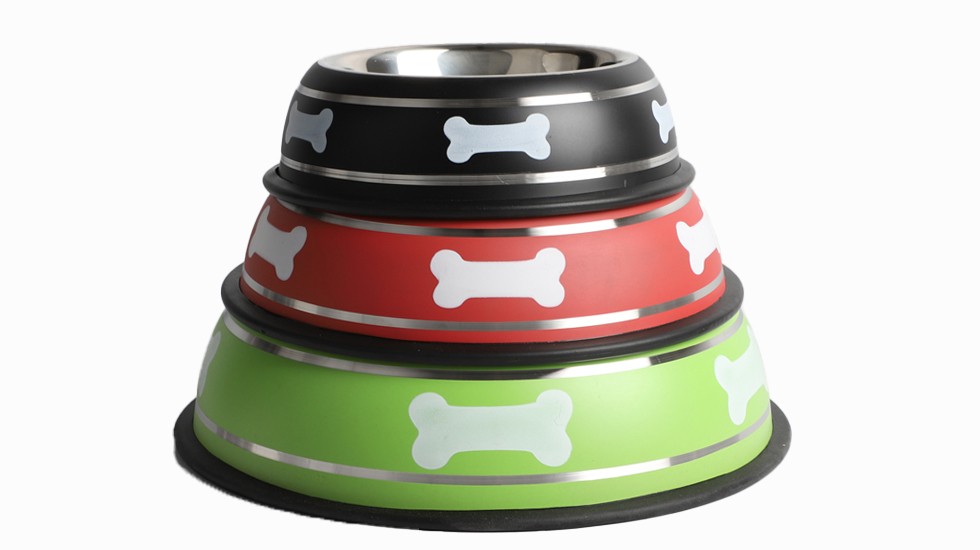
While stainless steel and ceramic are two of the most popular choices, dog bowls are available in a few other materials that each have their own pros and cons:
| Material | Pros | Cons |
| Plastic | Inexpensive, lightweight, fun colors/designs | Easily chewed and damaged, retains odors, may leach chemicals |
| Silicone | Durable, temperature resistant, and collapsible for travel | Absorbs stains and odors, degrades over time |
| Glass | Non-porous allows visibility of food | Heavy, not durable, noisy, could shatter |
| Wood | Stylish natural look | Prone to bacteria in pores, not for everyday use |
Each material has attributes to consider. But for pets who need to use dog bowls regularly or for outdoor use, stainless steel and glazed ceramic remain the top choices for their superior durability, cleanliness, safety, and functionality.
Safety Considerations for Each Material
It’s important to keep health and safety in mind when selecting dog bowl materials:
Stainless Steel – Choose food-grade 304 stainless steel; be cautious with pups that may have metal allergies
Ceramic – Inspect glaze for lead-free certification; avoid old ceramics with potential lead glaze; prevent cracking
Plastic – Ensure BPA-free; discard if scratched or cracked; don’t use with hot liquids
Silicone – Be sure silicone is food-grade quality; replace the bowl periodically as silicone breaks down
Glass – Discard if any chips or cracks appear; supervise use to prevent shattering
Wood – Seal untreated wood with a pet-safe finish; monitor for damage by providing crevices for bacteria
Any dog bowl material can present hazards if quality standards are not met or they are used inappropriately. But purchasing high-quality products from reputable manufacturers, following all safety recommendations, and properly caring for and cleaning dog bowls help minimize risks.
Matching Your Dog’s Needs to Bowl Material
| Dog’s Need | Best Bowl Material |
| Active chewers | Stainless steel or durable stoneware ceramic |
| Fast eaters | Wide stainless steel bowls, some with ridges |
| Food allergies | Stainless steel |
| Traveling | Collapsible silicone bowls |
| Messy drinkers | Non-porous ceramic and stainless steel |
| Arthritic dogs | Lightweight stainless steel |
| Flat-faced dogs | Shallow ceramic bowls |
| Senior dogs | Raised ceramic and stainless steel bowls |
| Outdoor use | Stainless steel |
| Small dogs | Appropriately sized ceramic and stainless steel |
Considering your own priorities along with your dog’s needs will naturally guide you toward the optimal material and style of dog bowl for your pet.
Tips for Keeping Your Dog’s Bowl Clean
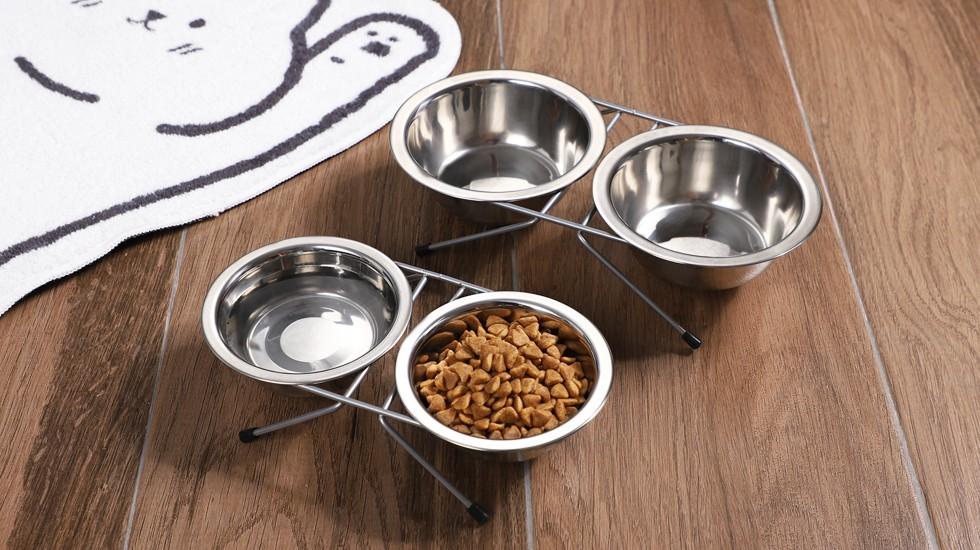
Maintaining the cleanliness of dog bowls helps prevent bacterial or fungal buildup that could make your dog sick. Useful tips include:
- Wash bowls in hot, soapy water after each use
- Sanitize weekly with diluted bleach – rinse thoroughly after
- Use the dishwasher for safe, easy cleaning of ceramic/stainless bowls
- Outdoor bowls should be brought in and washed frequently
- Discard cracked ceramic; replace scratched stainless steel
- Check under bowls for trapped debris or moisture
- Avoid plastic food storage bowls which can harbor bacteria
- Washstands, mats, and elevated bowls regularly too
- Allow bowls to fully air dry after washing
By practicing good bowl hygiene along with common sense care and maintenance specific to your chosen material, your dog’s bowls should provide safe, healthy feeding for years to come.
Conclusion: Choosing the Right Bowl for Your Dog’s Health
Ceramic and stainless steel dog bowls both have excellent qualities that make them top choices for pet owners. Stainless steel excels at durability, affordability, and easy cleaning. Ceramic offers beautiful styles and custom designs that fit home décor. Safety, cleaning convenience, bacteria resistance, and resilience for active dogs favor stainless steel. But the visual appeal and variety of ceramic also appeal to many pet owners.
Considering your dog’s needs and your own preferences will guide you to the ideal material and bowl design. Whether ceramic, stainless steel or even a combination of both, using the proper high-quality dog bowl for your faithful companion supports good nutrition and overall health. With the right bowl, you can be assured your dog has a healthy, happy place to eat both now and for years to come.

